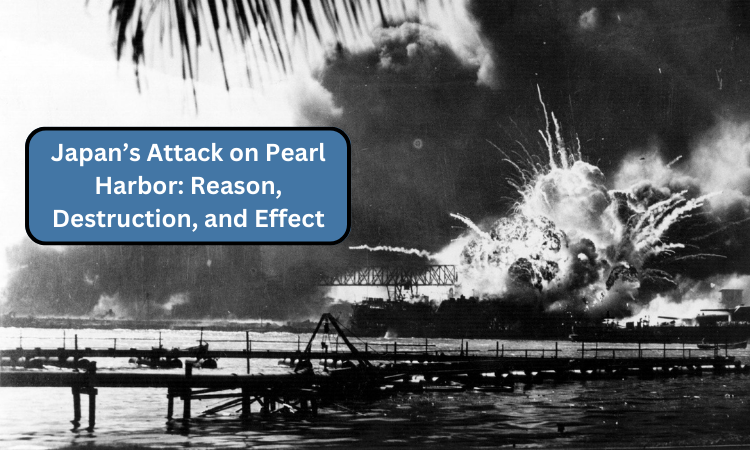
The attack on Pearl Harbor on December 7, 1941, stands as one of the most significant events of the 20th century. This surprise military strike by the Japanese Imperial Navy against the United States naval base at Pearl Harbor, Hawaii, is a defining moment in world history that catapulted the U.S. into World War II.
Economic Pressures
Japan had long held ambitions in the Asia-Pacific region, particularly as it sought to secure vital resources like oil, rubber, and iron from territories like Malaya, the Philippines, and Indonesia. However, the U.S., concerned about Japan's aggressive territorial expansions in China and elsewhere, initiated severe economic sanctions and embargoes, particularly cutting off oil exports to Japan. These actions severely hampered Japan’s military machine and threatened its imperial ambitions.
Strategic Imperatives
Recognizing that the U.S. Pacific Fleet at Pearl Harbor was the most significant obstacle to its expansionist aims, Japan believed that a preventive strike would buy time to solidify its position and strengthen its perimeter in the Pacific. The strategy was to incapacitate the U.S. Pacific Fleet, thereby giving Japan a free hand in Asia for the time being.
Overestimation and Miscalculation
Japanese leadership miscalculated the American response, thinking the U.S. would seek a negotiated peace after the Pearl Harbor attack, underestimating American resolve and resilience.
The Surprise Factor
The attack came early in the morning without a formal declaration of war. Using aircraft carriers, Japan launched planes that targeted battleships, cruisers, destroyers, and other vessels, as well as the surrounding military installations.
Scale of Destruction
The assault was devastating. Eight battleships, including the USS Arizona and USS Oklahoma, were targeted, with five of them sinking. Additionally, 188 aircraft were destroyed, and significant damage was inflicted on the base’s infrastructure. In terms of human loss, 2,403 Americans were killed, and another 1,178 were wounded.
Missed Targets
Though the damage was substantial, some of the primary targets, like aircraft carriers (which were out at sea) and oil storage facilities, were spared. This oversight would have significant ramifications during the Pacific War.
Immediate American Response
The day after the attack, President Franklin D. Roosevelt addressed Congress, declaring December 7 as “a date which will live in infamy." On December 8, the U.S. formally declared war on Japan, with Germany and Italy declaring war on the U.S. shortly after.
Mobilization and Resolve
The attack had the opposite effect of what Japan had hoped for. Instead of demoralizing and inducing fear, it galvanized American public opinion. The U.S. transitioned to a war footing, with industries, economies, and the general populace rallying with an unmatched unity and determination to win the war.
Shift in Pacific Power Dynamics
The attack marked the beginning of the Pacific War, a fierce conflict between the Allies and Japan. Over the next four years, the U.S. would mobilize its vast industrial and human resources to turn the tide against Japan. Notable battles like Midway, Iwo Jima, and Okinawa gradually weakened Japan’s position. The spared carriers from Pearl Harbor played pivotal roles in these battles.
Conclusion of the War
Japan's miscalculation at Pearl Harbor eventually led to its defeat. The U.S. dropped atomic bombs on the cities of Hiroshima and Nagasaki in August 1945, leading to Japan's surrender and the end of World War II.
Post-War Scenario
The attack had lasting implications for global politics. The U.S. emerged as a dominant superpower post-WWII. Japan, on the other hand, transformed from an imperial militaristic power to a pacifist nation under the U.S.'s guidance. The U.S. and Japan, erstwhile enemies, turned allies, with Japan playing a pivotal role in the U.S.'s post-war Asian strategy.
Final Word
The attack on Pearl Harbor was not just an assault on a naval base; it was an event that reshaped the course of the 20th century. It redefined global politics, led to the realignment of world powers, and set the stage for the Cold War. For the U.S. and Japan, it marked the beginning of a relationship that evolved from bitter enmity to strategic alliance. The lessons of Pearl Harbor—about preparedness, the unpredictability of conflict, and the consequences of underestimating an adversary—resonate even today.